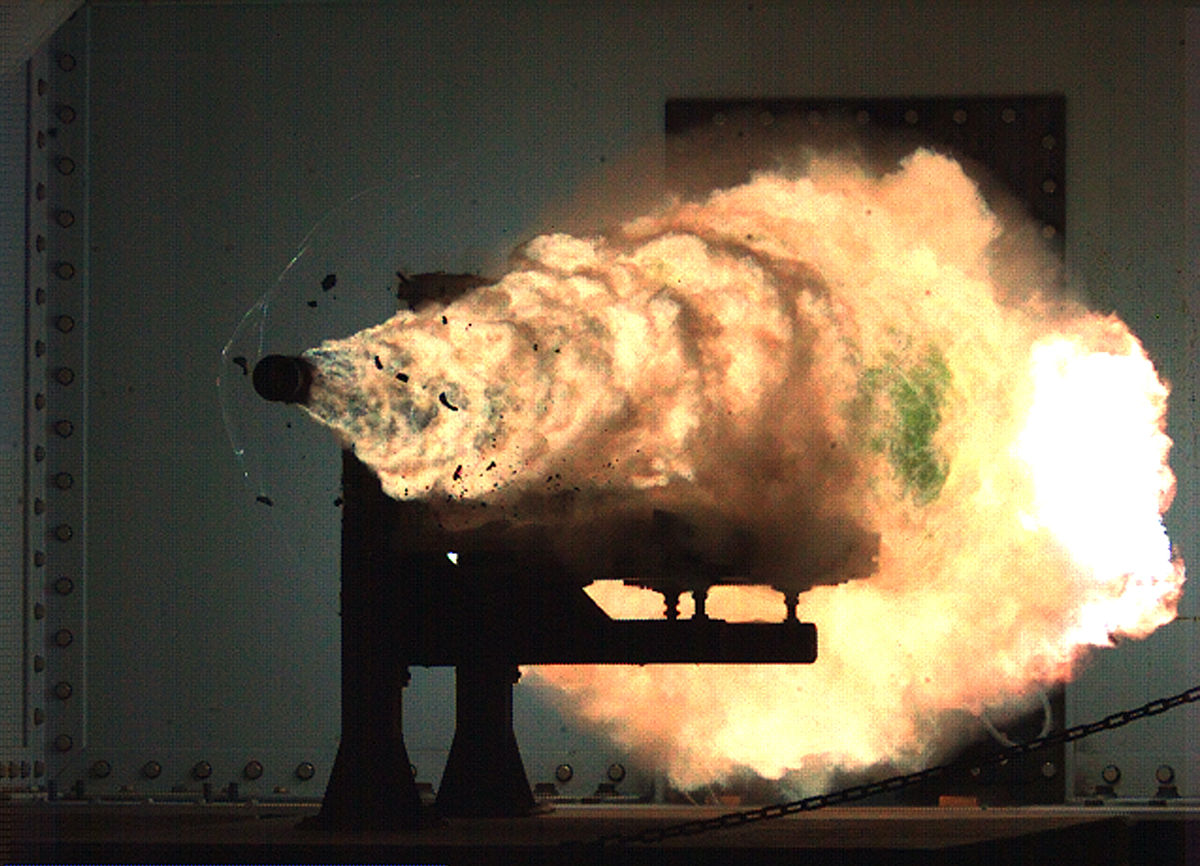I am wondering has anyone considered using an in space rail to accelerate objects? Say 100g acceleration along 1k miles of track to 100kmph, maybe?
Question Many alternate forms of space propulsion are currently being investigated why not this one?
- Thread starter djack2021
- Start date
You are using an out of date browser. It may not display this or other websites correctly.
You should upgrade or use an alternative browser.
You should upgrade or use an alternative browser.
Wolfshadw
Moderator
Thanks for the reply wolfshadw. However, I think that the need for an anchored rail system is not necessarily a limitation such a limitation can easily be overcome, if it is in fact a limiting factor. Firstly, the design engineer would probably take this possibility into consideration and create a design which addresses it. Secondly, I am not sure that I agree with this assessment, as the expellation of rocket fuel is essentially the same thing an exercise in newton's 3rd law I think, with the massive rail being the fuel that is ejected figuratively speaking as the rocket projectile is sent forward. Or, one might consider that given a need for a stationary launch system, if that proved to be true, it would simply be necessary to fire a projectile with equal force in opposite direction to create a stationary launch platform, the second projectile could use regenerative braking to recapture the energy of its launch after the spaceship was free of the monorail. Thirdly, as for the energy used to launch the rocket, the whole point of my original question is that solar energy in the inner solar system is plentiful and quite easily accessible making it an ideal source of energy to accelerate a spaceship to mars or beyond at speeds which would greatly reduce flight time without its having the need for a better engine. As an aside to address the return trip, a smaller rail at the destination helps, it would probably have to store power over time in a battery of some sort coupled with some type of ion engine on the spaceship. The most compelling point here is no need for an engine to cut flight times to mars from 2years to 3mos as a vasimr or nuclear engine would. A system like that would greatly increase the number of trips to the outer planets from a few in a small launch window every two years to virtually whenever NASA or Spacex wanted to go there.Unless the rail is anchored to something, you're not getting anywhere. The energy spent to move forward is pushed; moving the rail in the opposite direction. If it is anchored to something, the energy cost of acceleration is increased.
-Wolf sends
Thanks, COLGeek. I have seen the data at this link, however, my point is that maybe this should be an active topic of research for space propulsion, deserving of more funding possibly from an increased NASA budget, and not developed as just a space weapon. By the way this Railgun research could possibly benefit from the new superconducting magnet technology which is enabling the SPARC reactor research originating with MIT. In particular pay attention to how the magnetic field coils are being manufactured. Much cheaper and easier to produce, much greater field strength something like 10x or more than the current crop of super conducting magnets, all resulting in much more powerful magnets and ease of use & maintenance.
SPARC | Research | MIT Plasma Science and Fusion Center
Validating the physics behind the new MIT-designed fusion experiment | MIT News | Massachusetts Institute of Technology
Superconductor technology for smaller, sooner fusion | News | MIT Plasma Science and Fusion Center
One more interesting link.Thanks, COLGeek. I have seen the data at this link, however, my point is that maybe this should be an active topic of research for space propulsion, deserving of more funding possibly from an increased NASA budget, and not developed as just a space weapon. By the way this Railgun research could possibly benefit from the new superconducting magnet technology which is enabling the SPARC reactor research originating with MIT. In particular pay attention to how the magnetic field coils are being manufactured. Much cheaper and easier to produce, much greater field strength something like 10x or more than the current crop of super conducting magnets, all resulting in much more powerful magnets and ease of use & maintenance.
SPARC | Research | MIT Plasma Science and Fusion Center
Validating the physics behind the new MIT-designed fusion experiment | MIT News | Massachusetts Institute of Technology
Superconductor technology for smaller, sooner fusion | News | MIT Plasma Science and Fusion Center
Breakthrough in Nuclear Fusion? - Prof. Dennis Whyte - YouTube
Hi- this is a great idea, and has been conjectured before. It's usually called a mass driver==> Mass driver - Wikipedia I love your thought that you could use 2 to hold it stationary, flinging random things about space is prolly not a good idea though heh
Thanks, Particle Article, but again I guess I needed to provide a little more detail. I know what a mass driver is, I read a lot of Arthur C Clark, Isaac Asimov, and Heinlein growing up, I am not referring to a mass driver exactly but more the equivalent of a mono-rail on earth with "controlled acceleration" that's the reason for the 1k mile track. I am sure that most equipment and people would have issues with the 100+g acceleration of a mass driver. However we've already proven via our current crop of rockets that 6-7g for 6-7 minute can be well tolerated by people, the most fragile cargo that these things might accelerate into deep space. Or, just call it the space bullet train, the analogy serving to illustrate the mode of acceleration it would provide as opposed to being a gun in outer space, to the middle and outer solar system going from 0mph to 50k+ mph in about 5 minutes.
oh ok, i see, the driver accelerates slowly so the G is not extreme, nice one. I guess it raises the question of how fast an induction motor can go?-- the track can simply be a stainless or aluminium rail, fingers crossed electrical power can just be increased within the motor/projectile/launcher to bring it up to speed. An English engineer called Laithwaite studied and invented in the field of linear induction motors, and might be worth a Google
Yeh, I am sure that this can get quite complex, how fast can an induction motor run? Ideally, no motor at all will be required like a mass driver the rail itself should provide the acceleration to its payload. That might be accomplished by simply ganging many rails with fixed acceleration in series with one another energy provided to the projectile increases with each stage, probably complex, but I envision this as one of the first proof of concept ideas which would illustrate the reasonableness of mining asteroids in space and of space manufacturing possibly robotic manufacturing.
As for Laithwaite, I have seen some of his video's before, genius huh! I guess more to the point that this is one of several ideas that I think would benefit from more funding and basic research, others are Focus Fusion, LFTR's Thorium MSR, and Infrared body & brain imaging along the line of Elizabeth Warrens suggestion that government should be more involved with engaging in basic research. Essentially, human beings the world over should be involved with making the world a beautiful, safe, interesting place to live since were all just human with a short life span, lets have fun everyone!
As for Laithwaite, I have seen some of his video's before, genius huh! I guess more to the point that this is one of several ideas that I think would benefit from more funding and basic research, others are Focus Fusion, LFTR's Thorium MSR, and Infrared body & brain imaging along the line of Elizabeth Warrens suggestion that government should be more involved with engaging in basic research. Essentially, human beings the world over should be involved with making the world a beautiful, safe, interesting place to live since were all just human with a short life span, lets have fun everyone!
Similar threads
- Replies
- 1
- Views
- 2K
- Replies
- 17
- Views
- 5K
- Replies
- 11
- Views
- 6K
- Replies
- 18
- Views
- 7K
W
- Replies
- 0
- Views
- 2K
W
TRENDING THREADS
-
NASA's Voyager 1 spacecraft finally phones home after 5 months of no contact
- Started by Admin
- Replies: 11
-
Buried in the Cat's Paw Nebula lies one of the largest space molecules ever seen
- Started by Admin
- Replies: 0
-
-
-
A video made by me about space and the loneliness in the universe
- Started by drakotol
- Replies: 54
-
China's Tiangong space station damaged by debris strike: report
- Started by Admin
- Replies: 1
-
Latest posts
-
-
-
-
Scientists may finally know where the biggest, oldest black holes in the universe came from.
- Latest: arturo.v.dominguez@gmail.
-
-
-

Space.com is part of Future plc, an international media group and leading digital publisher. Visit our corporate site.
© Future Publishing Limited Quay House, The Ambury, Bath BA1 1UA. All rights reserved. England and Wales company registration number 2008885.



